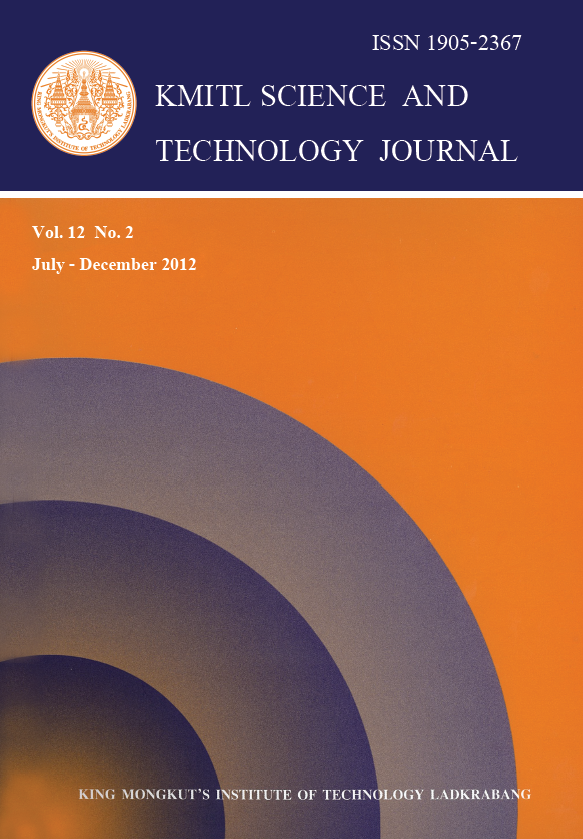Regional Climate Downscaling by Artificial Neural Network
Main Article Content
Abstract
Global models for climate change show that in the future temperature of the world is raising. However, regions of the world may experience different changes in temperature. Moreover, the regional climate changes are stronger than the global change. The main idea in this paper is to interrelate regional climate parameters to large-scale variables using an interpolation technique. Interpolation is used to downscale the output from global to regional climate models. Network is also used to train temperature data based on neural network technique. The temperature data from the National Center for Environmental Prediction (NCEP) reanalysis data are trained for temperature at Bangkok. In training phase, the error are minimized and artificial neural networks (ANNs) are adjusted for the connect weights. Accordingly, output data from the regional model are compared with observation data of the Thai Meteorological Department.
Keywords: Downscaling, Artificial Neural Network.
E-mail: dusadee.suk@kmutt.ac.th
Article Details
Copyright Transfer Statement
The copyright of this article is transferred to Current Applied Science and Technology journal with effect if and when the article is accepted for publication. The copyright transfer covers the exclusive right to reproduce and distribute the article, including reprints, translations, photographic reproductions, electronic form (offline, online) or any other reproductions of similar nature.
The author warrants that this contribution is original and that he/she has full power to make this grant. The author signs for and accepts responsibility for releasing this material on behalf of any and all co-authors.
Here is the link for download: Copyright transfer form.pdf
References
[2] Hsu, C.C. and Chen, C.Y., 2002. Regional load forecasting in Taiwan applications of artificial neural networks, Energy Conversion and Management, 44(12), 1941-1949.
[3] Tasadduq, I., Rehman, S. and Bubshaita, K., 2002. Application of neural networks for the prediction of hourly mean surface temperatures in Saudi Arabia, Renewable Energy, 25(4),545-554.
[4] Dibike, Y.B. and Coulibaly, P., 2006. Temporal neural networks for downscaling climate variability and extremes, Neural Networks, 19(2), 135-144.
[5] Kumar, S., 2010. Neural networks, New Delhi: Tata McGraw Hill Education Private Limited.
[6] Fausett, L.V., 1994. Fundamentals of Neural Networks, New Jersey: Prentice-Hall.
[7] Dohnal, I.J., 2004. Using of Levenberg-Marquardt method in Identification by Neural Networks, STUDENT EEICT.
[8] Pradeep, T., Srinivasu, P., Avadhani, P.S. and Murthy, Y.V.S., 2007. Comparison of variable learning rate and Levenberg-Marquardt back-propagation training algorithms for detecting attacks in Intrusion Detection Systems, International Journal on Computer Science and Engineering (UCSE), 3(11), 3572-3581.
[9] Hagan, M.T. and Menhaj, M.B., 1994. Training feedforward networks with the Marquardt Algorithm, IEEE Transactions on Neural Networks, 5(6), 989-993.
[10] Atkinson, Han, and Weimin, 2006. Elementary Numerical Analysis, 3 rd ed, New Jersey:Upper Saddle River.


